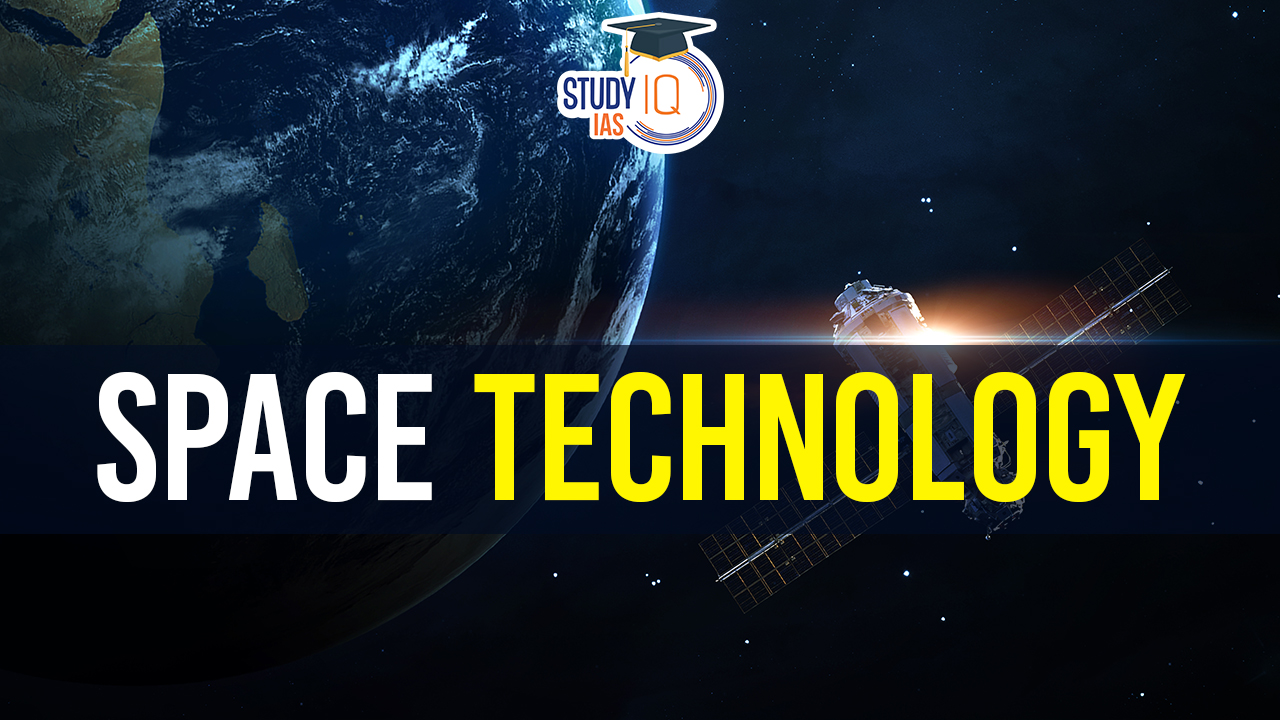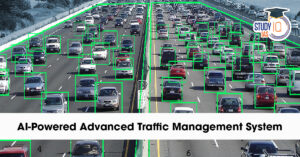Table of Contents
India’s space technology sector has evolved into a remarkable success story, boasting numerous achievements that have garnered global recognition. The Indian Space Research Organization (ISRO) has played a pivotal role in advancing the nation’s capabilities in space technology, leading to groundbreaking missions and cutting-edge innovations.
Space Technology in India
Space technology encompasses a vast array of innovations for space exploration and terrestrial infrastructure. It includes spacecraft design, propulsion, communication, navigation, remote sensing, and life support systems. On the ground, it involves launch sites, tracking centers, and research facilities. Space technology has revolutionized our understanding of the universe and has far-reaching impacts on industries, from enhancing global communication and precise navigation to improving weather forecasting and agricultural management. Additionally, it plays a critical role in defense, providing satellite-based intelligence and reconnaissance capabilities. These advancements have reshaped our world, making space technology an indispensable force for progress and discovery.
History of Space Technology in India
Phase I: 1960-70
- Vikram Sarabhai and Homi Bhabha laid the foundation of India’s space program, recognizing the potential of satellites.
- The Indian National Committee for Space Research (INCOSPAR) was formed in 1962.
- The launch of sounding rockets began in 1962, utilizing India’s proximity to the equator.
- The Thumba Equatorial Rocket Launching Station (TERLS) was established in Kerala.
- The indigenous Rohini Family of sounding rockets was developed.
- ISRO was founded in 1969, and the Department of Space was established in 1972.
Phase II: 1970-80
- India initiated satellite technology development for remote sensing and communication.
- India’s first satellite, Aryabhata, was launched in 1975 with Soviet assistance.
- The Satellite Launch Vehicle (SLV) was prepared for launch in 1979 but faced initial failures.
- The first indigenous satellite, Rohini, was launched.
Phase III: 1980-90
- ISRO aimed for a satellite launch vehicle capable of placing useful satellites in polar orbits.
- The Augmented Satellite Launch Vehicle (ASLV) faced initial launch failures.
Phase IV: 1990-2000
- In 1992, the ASLV saw its first successful launch.
- The Polar Satellite Launch Vehicle (PSLV) emerged as a reliable workhorse, launching remote sensing and communication satellites.
Developments after 2000
- The GSLV’s development flight took place in 2001.
- India ventured into lunar exploration with the Chandrayaan mission in 2008.
- ISRO entered the business of launching foreign payloads from Indian soil.
- Post-2010, ISRO focused on various programs, including the Polar Satellite Launch Vehicle (PSLV), Geosynchronous Satellite Launch Vehicle (GSLV), and next-generation GSLV Mark-III launch vehicle missions.
- The Earth Observation program introduced cutting-edge Indian remote sensing (IRS) satellites, weather/climate satellites, and the satellite navigation program (IRNSS).
| Phase | Key Developments |
| Phase I | – Dr. Vikram Sarabhai recognized satellite potential after Sputnik’s launch. – Space research under the Department of Atomic Energy in 1961. – Indian National Committee for Space Research (INCOSPAR) was founded in 1962. – Launch of sounding rockets began in 1962. – Thumba Equatorial Rocket Launching Station (TERLS) was established in Kerala. – Indigenous Rohini Family of sounding rockets developed. – ISRO was founded in 1969, and the Department of Space in 1972. |
| Phase II | – India developed satellite technology for remote sensing and communication. – Launch of India’s first satellite, Aryabhata, in 1975. – SLV launch attempts from Sriharikota; the first attempt failed in 1979. – First successful indigenous satellite launch named Rohini. |
| Phase III | – ISRO worked on a satellite launch vehicle for polar orbit. – 1987 launch of Augmented Satellite Launch Vehicle (ASLV) failed. – 1988 launch attempt after adjustments also failed. |
| Phase IV | – First successful ASLV launch in 1992. – PSLV became the workhorse launch vehicle, launching remote sensing and communication satellites. |
| Post-2000 | – GSLV’s development flight in 2001. – Chandrayaan mission to the moon in 2008. – ISRO enters the business of launching foreign payloads. – Development of launch vehicles like PSLV, GSLV, and GSLV Mark-III. – The Earth Observation program includes IRS satellites and weather/climate satellites. – Satellite navigation program includes IRNSS constellation. |
Indian Space Research Organisation (ISRO)
The Indian Space Research Organisation (ISRO) is the primary space agency of India, dedicated to harnessing the benefits of outer space for both India and humanity. It operates under the Department of Space (DOS) within the Government of India. This organization, which traces its origins to the Indian National Committee for Space Research (INCOSPAR) in 1962, was formally established on August 15, 1969. Subsequently, in 1972, DOS was founded, bringing ISRO under its purview.
Mission and Objectives
The primary mission of ISRO is to develop and apply space technology to address various national needs. The organization’s objectives encompass a broad range of endeavors, including satellite systems for communication, television broadcasting, meteorological services, and resource monitoring. Additionally, ISRO plays a vital role in space-based navigation services. It has also been instrumental in developing satellite launch vehicles, such as PSLV and GSLV, to deploy satellites in their designated orbits.
Contribution to Science and Education
Beyond its technological achievements, ISRO actively contributes to the advancement of science and science education in India. Various dedicated research centers and autonomous institutions in areas like remote sensing, astronomy, astrophysics, atmospheric sciences, and space sciences operate under the umbrella of the Department of Space. ISRO’s lunar and interplanetary missions, as well as other scientific projects, not only promote science education but also provide invaluable data to the scientific community, enriching the field of science.
Operational Centers
ISRO’s operational activities are distributed across several key centers and units, each specializing in different aspects of space technology and exploration:
- Vikram Sarabhai Space Centre (VSSC), Thiruvananthapuram: This center focuses on the development of launch vehicles.
- U R Rao Satellite Centre (URSC), Bengaluru: URSC is responsible for the design and development of satellites.
- Satish Dhawan Space Centre (SDSC), Sriharikota: SDSC is the hub for the integration and launching of satellites and launch vehicles.
- Liquid Propulsion Systems Centre (LPSC), Valiamala & Bengaluru: LPSC is involved in the development of liquid stages, including the cryogenic stage.
- Space Applications Centre (SAC), Ahmedabad: SAC is engaged in the development of sensors for communication and remote sensing satellites, as well as various application aspects of space technology.
- National Remote Sensing Centre (NRSC), Hyderabad: NRSC is responsible for the reception, processing, and dissemination of remote sensing satellite data.
Leadership
ISRO’s activities are guided by its Chairman, who also holds the position of Secretary of DOS and Chairman of the Space Commission. The Space Commission serves as the apex body responsible for formulating policies and overseeing the implementation of the Indian Space Programme.
Headquarters
ISRO’s headquarters is situated in Bengaluru, where it coordinates and supervises its diverse operations and initiatives.
Applications of Space Technology in India
India’s space technology has been widely utilized in various sectors, and some of the key applications are:
- Communication: The Indian National Satellite System (INSAT), including the GSAT series satellites, facilitates communication services such as television broadcasting, telemedicine, and disaster management. These satellites ensure connectivity, even in remote and underserved areas.
- Remote Sensing: India’s earth observation satellites, like the HySIS satellites, provide high-resolution images of the Earth’s surface. These images are crucial for applications such as land use mapping, resource management, and environmental monitoring.
- Navigation: The Indian Regional Navigation Satellite System (IRNSS), now known as NavIC, offers precise positioning and timing information, benefiting various sectors, including transportation, agriculture, and disaster management.
- Weather Forecasting: India’s meteorological satellites gather real-time weather data, which is pivotal for accurate weather forecasting and disaster management. This data aids in predicting and mitigating the impact of natural disasters.
- Agriculture: Data from earth observation satellites is extensively used for crop monitoring and assessment, soil moisture estimation, and drought prediction. The KISANSAT is an example of a satellite used for agricultural purposes.
- Disaster Management: The National Remote Sensing Centre (NRSC) leverages satellite data for disaster management during events like floods, earthquakes, and cyclones. Timely information helps in planning and response efforts. For instance, during the Joshimath sinking, ISRO released vital data.
- Defence: The Indian Space Research Organisation (ISRO) collaborates with the Indian Defence forces to provide satellite-based services. These services include surveillance, reconnaissance, and secure communication. Satellites like the RISAT series contribute significantly to defense and national security.
These applications of space technology in India demonstrate the country’s commitment to using space assets for the benefit of society, the economy, and national security. The continuous development and utilization of space technology have positioned India as a significant player in the global space arena.
Major Achievements of India in Space
| Mission | Details |
| Gaganyaan | – Three flights: 2 unmanned, 1 human spaceflight – Orbital Module for 3 astronauts (including a woman) – 5-7 days in low-Earth orbit (300-400 km) – 2 unmanned ‘Abort Missions’ in 2022 |
| Scramjet Engine Test | – Successful test in August 2016 – Uses Hydrogen as fuel and atmospheric Oxygen as oxidizer – Maiden test at Mach 6 with ISRO’s Advanced Technology Vehicle (ATV) |
| IN-SPACe (Indian National Space Promotion and Authorization Center) | – Facilitates private companies’ use of Indian space infrastructure – Acts as a bridge between ISRO and space-related ventures |
| NewSpace India Limited (NSIL) | – Founded in 2019, managed by the Department of Space – ISRO’s commercial arm – Promotes high-tech space operations – Headquarters in Bengaluru |
| Indian Space Association (ISpA) | – Represents the Indian space industry – Includes leading domestic and global corporations in space and satellite technologies |
| Amazonia-1 | – Launched on PSLV-C51 by NSIL – Optical Earth observation satellite for monitoring Amazon deforestation and agriculture |
| UNITYsat | – Deployed for radio relay services |
| Chandrayaan-3 | – Chandrayaan-3 is the third mission in the Chandrayaan programme |
| Aditya L1 | -Mission to the L1 point between the Sun and Earth |
| Upcoming Missions | Three Earth Observation Satellites (EOS-4, EOS-6, EOS-2) – Shukrayaan Mission to Venus – India’s own space station by 2030 – XpoSat space observatory for cosmic x-rays – |
Role of Private Sector in Space Technology in India
The global space economy is valued at approximately USD 360 billion, yet India, despite its status as a spacefaring nation, accounts for only about 2% of this economy. Unlike other spacefaring countries, India’s private sector has had a limited role in the global space industry.
Companies like SpaceX, Blue Origin, Virgin Galactic, and Arianespace have transformed the space sector by introducing innovations, cutting costs, and accelerating project timelines. In India, however, the private space industry has mainly served as suppliers or vendors to the government’s space initiatives.
Consequently, there was a pressing need to enable Non-Governmental Entities (NGEs) to actively participate in India’s space program and contribute significantly to its development, departing from their traditional roles.
Concerns with Space Technology in India
The Indian space sector, represented by the Indian Space Research Organization (ISRO) and other related entities, has made significant progress over the years, but it also faces several challenges and issues. Some of the key issues include:
- Funding and Budget Constraints: The ISRO has a limited budget compared to some of the other major space agencies. Insufficient funding can hamper the development of advanced technologies and ambitious projects.
- Technological Gaps: While ISRO has made great strides, there are still technological gaps in areas such as crewed space missions, reusable launch vehicles, and deep space exploration. Addressing these gaps requires substantial investments and research.
- Human Resources: Attracting and retaining top talent in space science and engineering can be challenging. Brain drain to countries with more lucrative opportunities can hinder the development of the sector.
- International Competition: India faces stiff competition from other spacefaring nations like the United States, Russia, China, and the European Union. This competition is not just in terms of space exploration but also in satellite launches and commercial space services.
- Regulatory Framework: India’s space sector is regulated by a complex set of laws and policies. Streamlining and updating these regulations is necessary to encourage private sector involvement and ensure efficient management of space activities.
- Lack of a Robust Commercial Space Industry: While initiatives like IN-SPACe and NSIL aim to promote private sector participation in space activities, the commercial space industry in India is still in its nascent stages. Building a strong commercial space ecosystem is essential for long-term sustainability.
Space Technology in India UPSC
India’s space sector, led by ISRO, has achieved significant milestones in space technology. It has a rich history dating back to the 1960s, marked by satellite development and launch vehicle successes. ISRO’s missions, like Chandrayaan and Mars Orbiter, garnered global acclaim. The organization contributes to science, education, and applications ranging from communication to defense. Private sector involvement is limited, unlike global counterparts. To progress, India should address funding limitations, bridge technological gaps, retain talent, attract investment, streamline regulations, and promote a robust commercial space industry. These actions can enhance India’s role in the global space arena and boost economic and strategic advantages.


 Mental Healthcare in India, Scope and Go...
Mental Healthcare in India, Scope and Go...
 Most Commonly Used Cancer Drugs and Thei...
Most Commonly Used Cancer Drugs and Thei...
 India Launched AI-Powered Traffic Manage...
India Launched AI-Powered Traffic Manage...





















